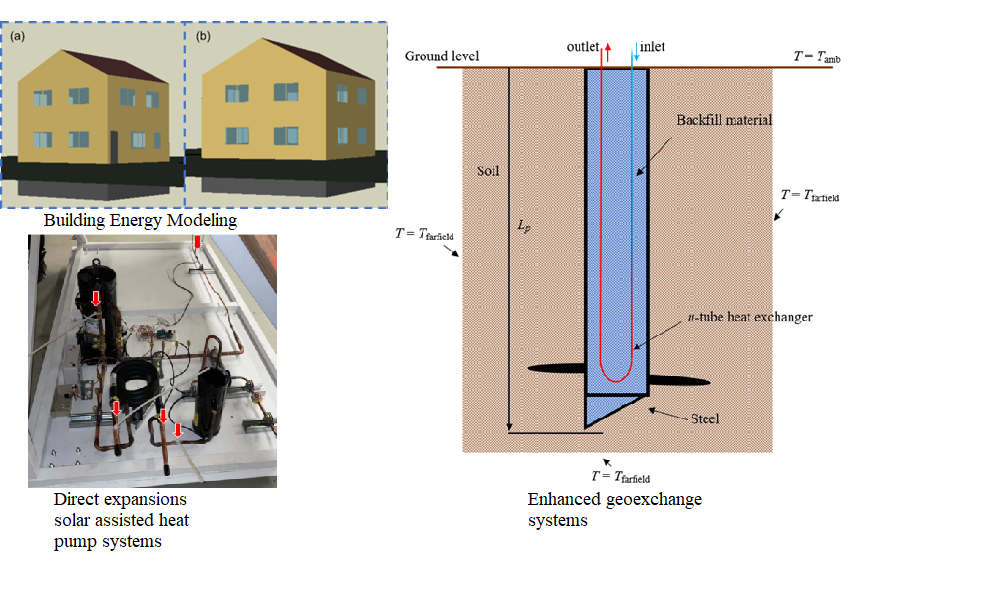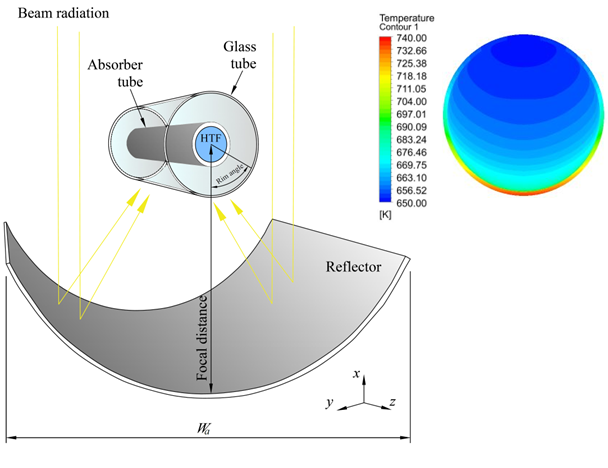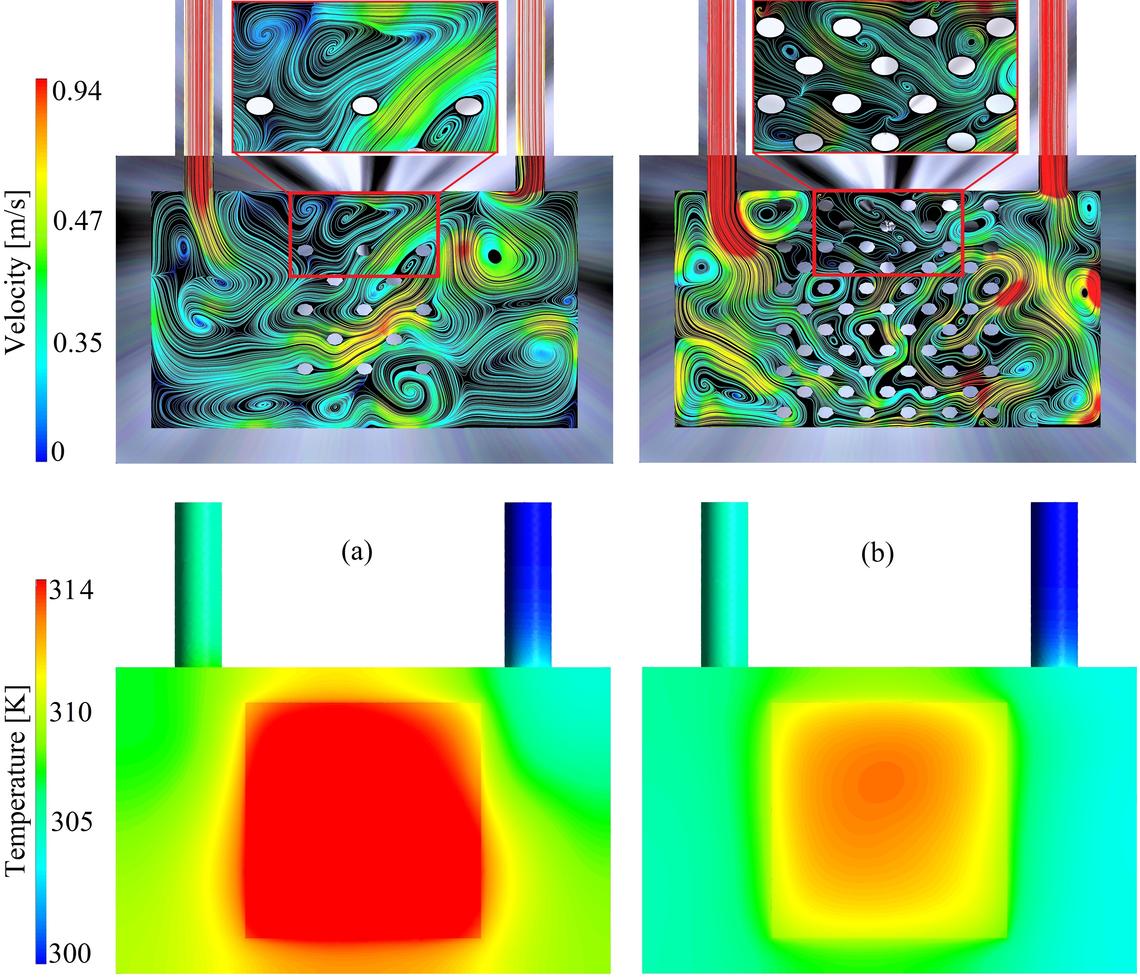Overview
Broadly, our research is concerned with the application of the fundamentals of heat transfer, thermodynamics, and fluid mechanics together with applied computational fluid dynamics to model and optimize sustainable thermal energy systems. Our current research is looking at novel and low cost options for the decarbonation of space heating and cooling in buildings, thermal energy storage to ensure high penetration of renewable energy in the electric grid, novel concentrating solar thermal systems for simultaneous generation of electricity and heat, and alternative refrigeration systems among others.

Building Decarbonization Using Heat Pump Technology
Heat pumps are emerging as an alternative technology meeting the space heating and cooling in residential and commercial buildings. When coupled with renewable electricity, they can essentially provide heating and cooling with zero emissions. Despite this potential, heat pumps make up a small percentage of heating systems for buildings. Our research is aimed at addressing some of the challenges that have hindered the wide scale use of heat pumps, especially in cold climates. Because air source heat pumps are less efficient in cold climates when temperature drop significantly, we are undertaking studies to couple them with solar thermal energy. Our research is considering performance improvement of solar assisted air source heat pumps as we all as developing direct expansion solar assisted heat pump systems. For ground source heat pump systems, our research is looking at options for reducing the cost of these systems and addressing lack of drilling space in densely populated areas by coupling heat pumps with building foundations or enhancing their performance with heat recovery.

Concentrating Solar Power
Owing to the ease with which thermal energy can be stored and dispatched compared to electrical energy, concentrating solar power (CSP) is considered advantageous for large scale energy generation and storage compared to photovoltaic (PV) solar. However, the cost of CSP derived energy is still higher than that of PV. Our research in this areas is looking at ways of improving the performance of CSP technology and options for further cost reductions of energy generated using these systems. Our current research is developing and optimizing concentrating photovoltaic/thermal (CPV/T) systems for simultaneous generation of electrical and thermal energy, new heat transfer fluids for CSP systems and heat transfer enhancement with novel inserts and nano fluids, among others.

Thermal Energy Storage
With the increasing commitments to reduce the emission of greenhouse gases into the atmosphere, the share of renewable energy is increasing considerably. However, most of the renewable energy resources such as wind and solar are intermittent, available when demand is low and not available when demand of energy is the highest. Thermal energy storage is a low cost option for matching demand and supply, storing energy when the resources are available and releasing it when demand is high and resource is not available. Our team is developing innovative solutions for short term and long term energy storage for residential scale and grid scale applications. The use of phase change material for residential scale thermal energy storage, pumped thermal energy storage for grid scale thermal energy storage and thermal energy storage systems for high temperature solar thermal are among the topics we are working on.

Electronics Cooling
The advent of modern technologies and the increasing need for high-performance electronic devices has led to miniaturizing electronic equipment resulting in higher heat fluxes. Hence, overheating is still a great concern in electronic systems. It is beyond doubt that the higher heat flux requires faster heat dissipation rates to keep component temperatures within safe limits (i.e., 100 oC). Heat sinks, which are deployed in an extensive variety of applications and are commonly employed for electronics cooling applications, have an essential role in various engineering areas. Accordingly, a suitable design of the heat sink which is the heart of a cooling system plays a pivotal role in the reliable operation of electronic equipment. In addition to cooling of electronic chips, heat sinks have other important applications such as cooling of photovoltaic modules to reach higher electrical performance, optoelectronics, high-power semiconductor equipment, power transistors, and any device that has internal heat generation and is unable to dissipate the heat and maintain its standard temperature. Accordingly, our main objective is to assess, develop, and optimize novel heat sinks based on energy and exergy principles for high heat flux electronics cooling systems.
